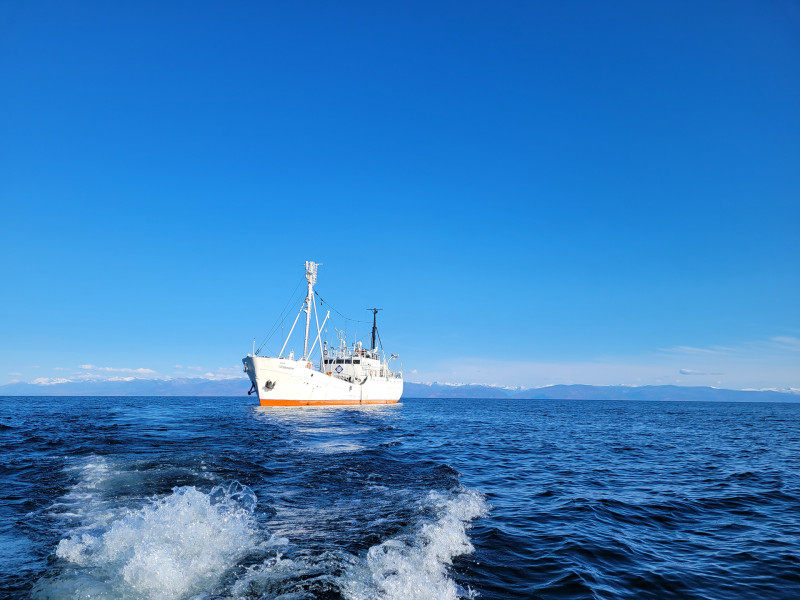Circum-Baikal Expedition on the R/V “G.Yu. Vereshchagin” from September 17 to October 1, 2024
Complex field covering the whole Baikal water area was carried out on the R/V “G.Yu. Vereshchagin” within the State Assignments No. 0279-2021-0005 “Investigation of transformations of water bodies state...” (led by A.P. Fedotov), No. 0279-2021-0004 “Investigation of advective and turbulent water exchange...” (led by I. A. Aslamov), and No. 0279-2021-0015 “Studies of viral and bacterial communities...” (led by O.I. Belykh).
The purpose of the expedition was to conduct comprehensive monitoring of abiotic and biotic components of the Baikal ecosystem to identify patterns of their spatio-temporal dynamics, experimental study of mechanisms and processes affecting the distribution and cycling of matter in the water column.
During the expedition, sampling at fixed horizons from the surface to the bottom was carried out using a Carousel SBE-32 cassette-type sampler equipped with 24 5-liter bathometers on a standard grid of stations for longitudinal and transverse transects of the lake. Water samples were taken to analyze the chemical and gas composition, as well as to study the distribution and species composition of phytoplankton. Phyto- and zooplankton samples were collected by a Juday net. The work was performed in three basins of the lake, as well as in Barguzinsky and Chivyrkuysky Bays and Maloye More. Water sampling and sampling using a Juday net were conducted at 43 stations. Water samples for hydrochemical analysis were taken in 9 rivers: Goloustnaya, Buguldeika, Anga, Turka, Barguzin, Tompuda, Rel, Verkhnyaya Angara, and Kichera. Hydrophysical measurements were done at 78 stations using a high-precision CTD probe SBE-25 with additional dissolved oxygen and transparency sensors.
On the ship`s course, the temperature and electrical conductivity of the water surface, meteorological parameters, aerosol concentration, and long- and short-wave radiation were recorded, as well as gas bubble outlets, which were monitored using a hardware-software complex based on a Furuno echo sounder with recording of echogram data.
Experiments with autonomous drifting buoy stations of our own development, “Pilgrim,” were carried out in an area of Elokhin Bay.
At the Davsha station, work was carried out for further modernization of the automatic hydrometeorological station.
In South Baikal, at Cape Kedrovy, we measured the heat flux in the lake bottom sediments.
Total samples collected:
- for hydrochemical analysis – 294
- to determine the concentration of dissolved methane – 544
- for zooplankton – 108

































